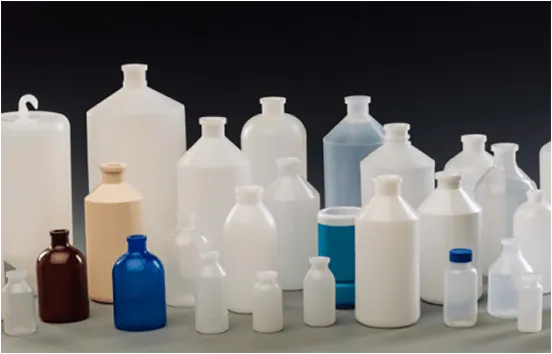
-
 Afrikaans
Afrikaans -
 Albanian
Albanian -
 Amharic
Amharic -
 Arabic
Arabic -
 Armenian
Armenian -
 Azerbaijani
Azerbaijani -
 Basque
Basque -
 Belarusian
Belarusian -
 Bengali
Bengali -
 Bosnian
Bosnian -
 Bulgarian
Bulgarian -
 Catalan
Catalan -
 Cebuano
Cebuano -
 Corsican
Corsican -
 Croatian
Croatian -
 Czech
Czech -
 Danish
Danish -
 Dutch
Dutch -
 English
English -
 Esperanto
Esperanto -
 Estonian
Estonian -
 Finnish
Finnish -
 French
French -
 Frisian
Frisian -
 Galician
Galician -
 Georgian
Georgian -
 German
German -
 Greek
Greek -
 Gujarati
Gujarati -
 Haitian Creole
Haitian Creole -
 hausa
hausa -
 hawaiian
hawaiian -
 Hebrew
Hebrew -
 Hindi
Hindi -
 Miao
Miao -
 Hungarian
Hungarian -
 Icelandic
Icelandic -
 igbo
igbo -
 Indonesian
Indonesian -
 irish
irish -
 Italian
Italian -
 Japanese
Japanese -
 Javanese
Javanese -
 Kannada
Kannada -
 kazakh
kazakh -
 Khmer
Khmer -
 Rwandese
Rwandese -
 Korean
Korean -
 Kurdish
Kurdish -
 Kyrgyz
Kyrgyz -
 Lao
Lao -
 Latin
Latin -
 Latvian
Latvian -
 Lithuanian
Lithuanian -
 Luxembourgish
Luxembourgish -
 Macedonian
Macedonian -
 Malgashi
Malgashi -
 Malay
Malay -
 Malayalam
Malayalam -
 Maltese
Maltese -
 Maori
Maori -
 Marathi
Marathi -
 Mongolian
Mongolian -
 Myanmar
Myanmar -
 Nepali
Nepali -
 Norwegian
Norwegian -
 Norwegian
Norwegian -
 Occitan
Occitan -
 Pashto
Pashto -
 Persian
Persian -
 Polish
Polish -
 Portuguese
Portuguese -
 Punjabi
Punjabi -
 Romanian
Romanian -
 Russian
Russian -
 Samoan
Samoan -
 Scottish Gaelic
Scottish Gaelic -
 Serbian
Serbian -
 Sesotho
Sesotho -
 Shona
Shona -
 Sindhi
Sindhi -
 Sinhala
Sinhala -
 Slovak
Slovak -
 Slovenian
Slovenian -
 Somali
Somali -
 Spanish
Spanish -
 Sundanese
Sundanese -
 Swahili
Swahili -
 Swedish
Swedish -
 Tagalog
Tagalog -
 Tajik
Tajik -
 Tamil
Tamil -
 Tatar
Tatar -
 Telugu
Telugu -
 Thai
Thai -
 Turkish
Turkish -
 Turkmen
Turkmen -
 Ukrainian
Ukrainian -
 Urdu
Urdu -
 Uighur
Uighur -
 Uzbek
Uzbek -
 Vietnamese
Vietnamese -
 Welsh
Welsh -
 Bantu
Bantu -
 Yiddish
Yiddish -
 Yoruba
Yoruba -
 Zulu
Zulu
Understanding the Uses and Benefits of Red Top Serum Clot Activator Tubes in Laboratory Testing
Understanding Red Top Serum Clot Activator Tubes
In modern medical laboratories, the efficacy and reliability of blood sample collection are crucial to accurate diagnosis and patient management. Among the various types of blood collection tubes, the red top serum clot activator tube is one of the most widely used. This article delves into the features, purposes, and significance of the red top serum clot activator tube in clinical practice.
Composition and Structure
The red top serum clot activator tube is typically made of glass or plastic and contains no additives, ensuring that the blood collected can coagulate naturally. What sets this tube apart is the presence of a clot activator—a substance that accelerates the clotting process. Common clot activators include silica or other inert materials lined on the tube's interior. This design allows for the serum to be separated from the cellular components after centrifugation, which is key for obtaining serum for various laboratory tests.
Purpose and Applications
The primary purpose of the red top serum clot activator tube is to facilitate the collection and processing of serum for biochemical analyses. When blood is drawn into this tube, it is allowed to clot at room temperature for a specific period—usually 30 minutes. After clotting, the tube is subjected to centrifugation, which separates the serum from the clot. This serum can then be used for a wide array of diagnostic tests, including but not limited to
1. Hormone Testing Measurements of hormones such as insulin, thyroid hormones, and adrenal hormones can be conducted using serum samples. 2. Electrolyte Analysis Serum electrolytes, like sodium and potassium, are critical for assessing metabolic and kidney function.
3. Lipid Panels Assessing the levels of cholesterol and triglycerides in the serum is vital for cardiovascular risk assessments.
red top serum clot activator tube

5. Therapeutic Drug Monitoring For medications that require close monitoring, serum levels can be measured to adjust dosages appropriately.
Advantages
One of the key advantages of the red top serum clot activator tube is its ability to yield serum samples quickly and efficiently. The clotting process is relatively rapid, allowing laboratories to process samples and report results in a timely manner. Moreover, the absence of additives minimizes extraneous variables that could interfere with test results, ensuring accuracy and reliability.
Handling and Storage
Proper handling and storage of red top serum clot activator tubes are essential to maintaining sample integrity. It is recommended to invert the tube gently several times after drawing blood to ensure thorough mixing of the blood with the clot activator. Samples should be stored in a cool, dry place and processed within a specific time frame to prevent degradation of analytes.
Conclusion
The red top serum clot activator tube is a vital component of the laboratory workflow in many healthcare settings. Its design and functionality make it indispensable for a wide range of diagnostic tests. By enabling the effective separation of serum for analysis, this tube plays an essential role in the detection and monitoring of diseases, ultimately contributing to improved patient outcomes. As advances in laboratory technology continue to evolve, the fundamental utility of the red top serum clot activator tube remains steadfast in the quest for accurate and timely medical diagnosis.
-
Premium Metal Dropper Bottle for Precise Dispensing 250ml & 1ml Options AvailableNewsJul.04,2025
-
20 ml Headspace Vials - High Quality Polyethylene & Plastic Vials for Lab UseNewsJul.04,2025
-
Small Bottle with Pipette - Precise Dispensing 100ml Pipette Bottles for Essential Oils & Lab UseNewsJun.24,2025
-
Acetic Anhydride Bottle for Accurate Dropper Measurement in Pharmacy Use High-Quality Dropper BottlesNewsJun.10,2025
-
Innovative PET Bottle Design for Juice – Unique Shapes & Customization OptionsNewsJun.10,2025
-
20 Pack Sterilized Petri Dishes – Assorted Sizes, High Quality Small Plastic Petri Dishes for Lab UseNewsJun.10,2025






















